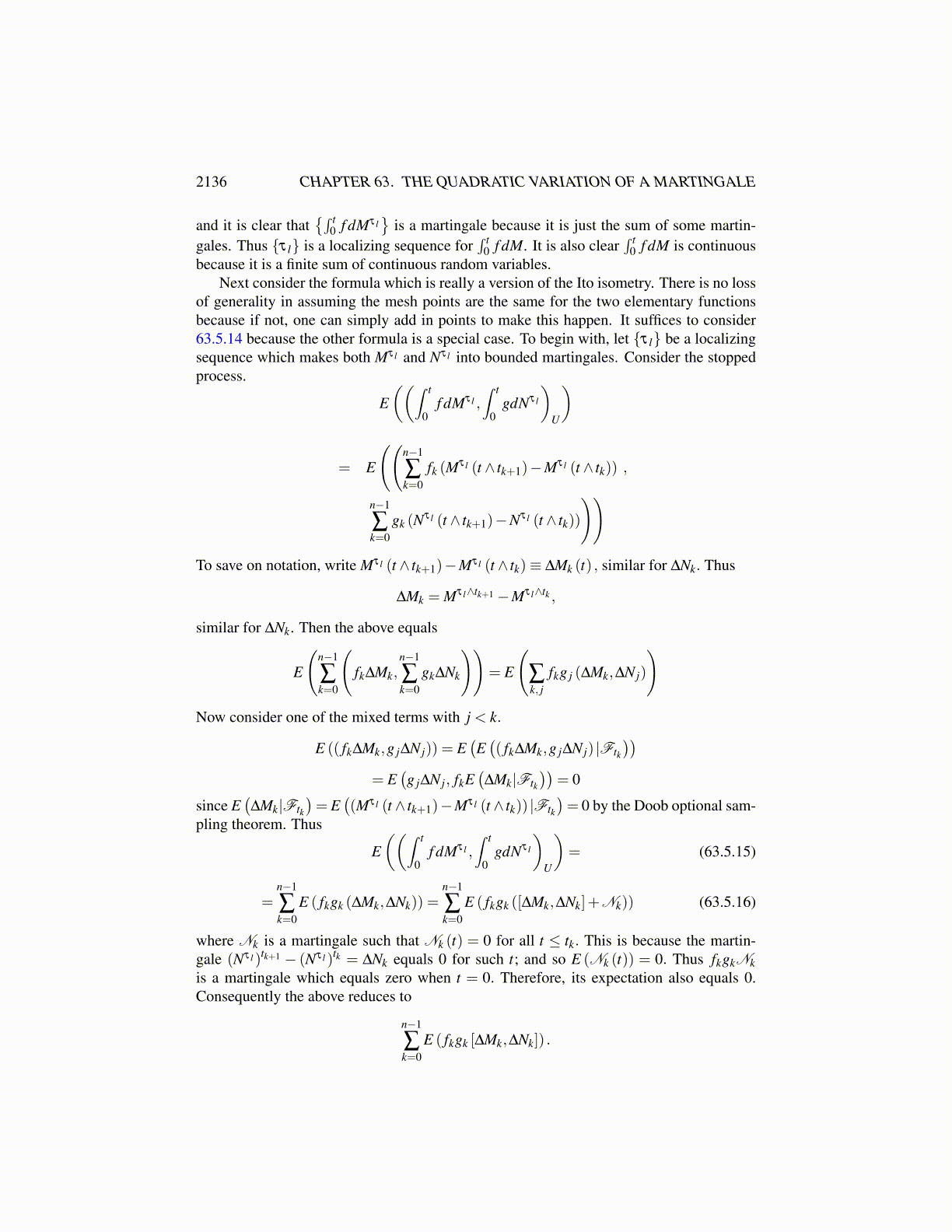
2136 CHAPTER 63. THE QUADRATIC VARIATION OF A MARTINGALE
and (∫Ω
(M∗)2 dP)1/2
are equivalent. The first comes from an inner product since from Corollary 63.3.3, [·, ·] isbilinear and symmetric and nonnegative. If [M,M] (T ) = [M] (T ) = 0 in L1 (Ω) , then fromthe Burkholder Davis Gundy inequality, M∗ = 0 in L2 (Ω) and so M = 0. Hence∫
Ω
[M,N] (T )dP
is an inner product which yields the equivalent norm.
Example 63.4.7 An example of a real martingale is the Wiener process, W (t). It has theproperty that whenever t1 < t2 < · · · < tn, the increments {W (ti)−W (ti−1)} are indepen-dent and whenever s < t,W (t)−W (s) is normally distributed with mean 0 and variance(t− s). For the Wiener process, we let
Ft ≡ ∩u>tσ (W (s)−W (r) : r < s≤ u)
and it is with respect to this normal filtration that W is a continuous martingale. What isthe quadratic variation of such a process?
The quadratic variation of the Wiener process is just t. This is because if A ∈Fs,s < t,
E(XA
(|W (t)|2− t
))=
E(XA
(|W (t)−W (s)|2 + |W (s)|2 +2(W (s) ,W (t)−W (s))− (t− s+ s)
))Now
E (XA (2(W (s) ,W (t)−W (s)))) = P(A)E (2W (s))E (W (t)−W (s)) = 0
by the independence of the increments. Thus the above reduces to
E(XA
(|W (t)−W (s)|2 + |W (s)|2− (t− s+ s)
))
= E(XA
(|W (t)−W (s)|2− (t− s)
))+E
(XA
(|W (s)|2− s
))= P(A)E
(|W (t)−W (s)|2− (t− s)
)+E
(XA
(|W (s)|2− s
))= E
(XA
(|W (s)|2− s
))and so E
(|W (t)|2− t|Fs
)= |W (s)|2− s showing that t → |W (t)|2− t is a martingale.
Hence, by uniqueness, [W ] (t) = t.